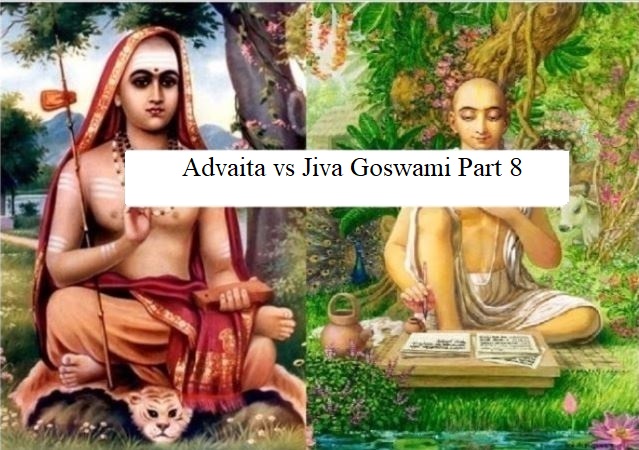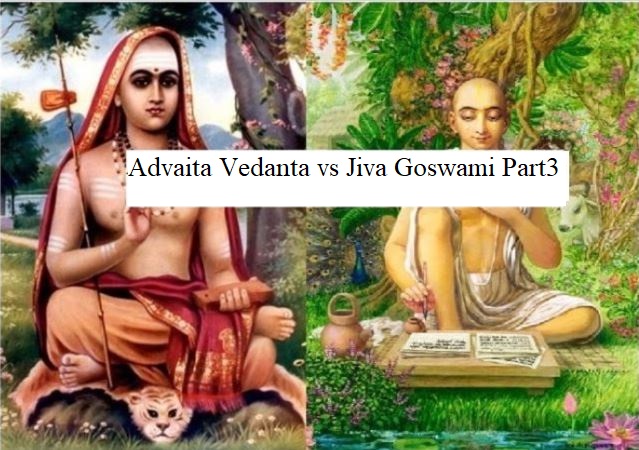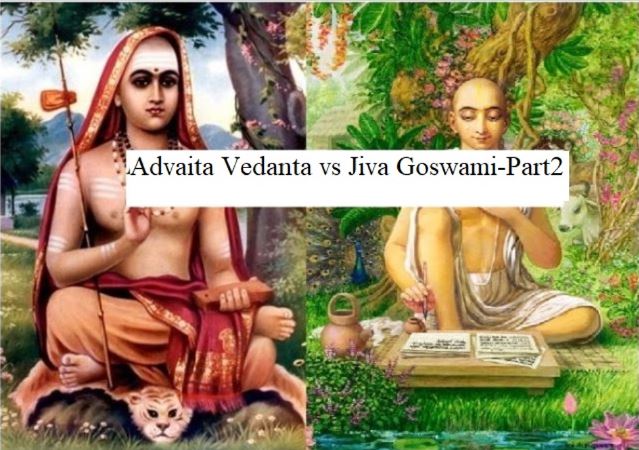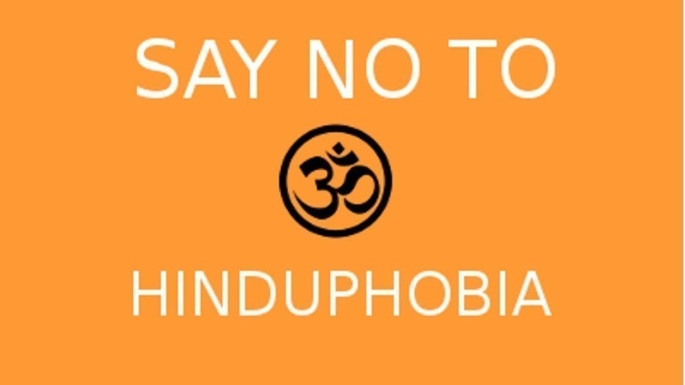I have decided to answer some fake claims agains Hinduism hence I have taken this objections and answered them.
Claim1: In Ramayana 6.125.43-44 Bharata donated 16 virgin girls gift as wives to Hanuman after he returrned from Lanka
Response: This an absolutely nonsensical claim for sex slavery, reason being that Bharata is promising Hanuman Virgins from high families for marriage. Let us look at the verses once.
देवो वा मानुषो वा त्वमनुक्रोशादिहागतः || ६-१२५-४३
प्रियाख्यानस्य ते सौम्य ददामि ब्रुवतः प्रियम् |
गवां शतसहस्रं च ग्रामाणां च शतं परम् || ६-१२५-४४
सकुण्डलाः शुभाचारा भार्याः कन्याश्च षोडश |
हेमवर्णाः सुनासोरूः शशिसौम्याननाः स्त्रियः || ६-१२५-४५
सर्वाभरणसम्पन्ना सम्पन्नाः कुलजातिभिः |
43-45. saumya = O the gentle one!; tvam = are you; devovaa = a divine being maanuShovaa = or a human being; aagataH = who have come; iha = here; anukroshaat = out of compassion?; te priyaakhyaanasya = to you; who have given this agreeable news to me; dadaami = I shall give (in return); priyam bruvataH = for the pleasant tidings; shatasahasram cha = a hundred thousand; gavaam = cows; shatam = a hundred; param graamaaNaam = best villages; bhaaryaaH = and for wives; shooDasha = sixteen; hemavarNaaH = golden complexioned; kanyaaH = virgin girls; shubhaachaaraaH = of a good conduct; sakuN^DalaaH = decked with ear-rings; sunaa soruuH = having beautiful noses and thighs; sarvaabharaNa sampannaaH = adorned with all kinds of jewels; shashi saumyaananaaH = with charming countenances as delightful as the moon; kulajaatibhiH = and born in a noble family.
“O the gentle one! Are you a divine being or a human being, who have come here out of compassion? To you, who have given this agreeable news to me, I shall give in return, for the pleasant tidings, a hundred thousand cows, a hundred best villages, and for wives, sixteen golden complexioned virgin girls of a good conduct, decked with ear-rings, having beautiful noses and thighs, adorned with all kinds of jewels, with charming countenances as delightful as the moon and born in a noble family.”
If the Virgin girls are of good family then how can these be slaves ?
Claim 2:Manusmriti 7.96 ” Women and other goods belongs to him who wins them in war” hence women are taken as sex slaves.
Response: The Manusmriti verse 7.96 is as follows
रथाश्वं हस्तिनं छत्रं धनं धान्यं पशून् स्त्रियः ।
सर्वद्रव्याणि कुप्यं च यो यज् जयति तस्य तत् ॥ ९६ ॥
rathāśvaṃ hastinaṃ chatraṃ dhanaṃ dhānyaṃ paśūn striyaḥ |
sarvadravyāṇi kupyaṃ ca yo yaj jayati tasya tat || 96 ||
Chariots and horses, elephants, umbrellas, wealth, grains, animals, women, all goods and baser metals belong to him who wins them.—(96)
Actually this section is dealing with how the King should be in battle how the soldiers should be and also what are ethics that should be adopted by the King while fighting. Now why are women taken along with the goods. Since it ia the duty of the King to take care of these women, obviously it is not married women who are being talked about, it is about young virgin women who are being talked about here in this battle. Now why is the King taking them. We get the answer in Narada Smriti
Narada Smriti 12:22
यदा तू नैव कश्चित् स्यात् कन्या राजनमाश्रयेत् ।
अनुज्ञया तस्य वरं प्रतीत्य वरयेत् स्वयम् ।।
Translation: If a virgin woman is without any kith or kin, she ought to be in the care of the King with the permission of the King she may go ahead and search for a suitable bridegroom.
This clearly indicates that the King is the protector of such women and he must have them in his care. This is how the versw from Manusmruti ought to be understood.
Also forcible marriage is prohibited by the Dharma Shastra itself. We will look at this later.
Claim 3: Rigveda 6/27/8 mentions Abhyavarti, son of Chayaman, presenting a gift of slave girls stuffed in two big wagons to Rishi Bhardavaj. This shows sex slavery in Hinduism.
Response: This verse does not even have anything to do with slave girls being gifted. Following is the verse
द्व॒याँ अ॑ग्ने र॒थिनो॑ विंश॒तिं गा व॒धूम॑न्तो म॒घवा॒ मह्यं॑ स॒म्राट्। अ॒भ्या॒व॒र्ती चा॑यमा॒नो द॑दाति दू॒णाशे॒यं दक्षि॑णा पार्थ॒वाना॑म् ॥८॥
Translation by Dr Tulsi Ram
Agni, refulgent ruler, commanding wealth, power, honour and excellence, dynamic leader ever on the move for progress and victory, revered and celebrated all round, gives me both chariot warriors for defence of the nation and happy families and a team of twenty creative ministers to bear the burdens of the nation, which gift from any of global rulers is invulnerable indeed.
Besides what we have here is वधूमन्तः and रथिनः , here रथिनः indicates charioteers, and वधूमन्तः indicates the quality of the charioteers. Even if वधू be taken as brides, they will be the brides of the charioteers. Hence obviously this Mantra has nothing that our opponent wants to prove.
Claim 4:In Ramayana 2.32.15 Ram donated many slave girls to Brahmins. Hence proving sex slavery
Response: This is one more nonsense, following is that we see in the Ramayana,
कौसल्याम् च याअशीर्भिर् भक्तः पर्युपतिष्ठति |
आचार्यः तैत्तिरीयाणाम् अभिरूपः च वेदवित् || २-३२-१५
तस्य यानम् च दासीः च सौमित्रे सम्प्रदापय |
कौशेयानि च वस्त्राणि यावत् तुष्यति स द्विजः || २-३२-१६
15;16. saumitre = Oh; lakshmana! yaH = which brahmana; taithiriiyaNaam = studying Taittiriya ( a schoolf yajurveda); aachaaryaH = a preceptor; abhiruupashcha = a man of conformity; vedavit = a knower of Vedas; paryupatishhTati = seving; kausalyaam = Kausalya; bhaktaH = with his blessing; tasya = to him; sampradaapaya = in duly gifted; yaanamcha = conveyance; daasiishcha = servant-maids; kaushayaani vastraaNicha = silken clothes; yaavat = till; saH dvijaH = that brahmana; tushhyati = gets satisfied.
“Oh, Lakshmana! Which brahman is studying Taittiriya(a school of yajurveda), a preceptor, a man of conformity; a knower of Vedas, serving Kausalya with his devotion and blessing, to him see that he is duly gifted conveyance, servant maids and silken clothing till he gets satisfied.”
Here Dasi stands for servant maids and not slave girls hence another misinterpretation of our opponent has been proven.
Claim 5: Narada Smriti 12.78 Intercourse is permitted with a wanton woman, who belongs to another than the Brahman caste, or a prostitute, or a female slave, or a female not restrained by her master (nishakasini), if these women belong to a lower caste than oneself; but with a woman of superior caste, intercourse is prohibited”
Response: Now 1st of all this shows the height of misinterpretation by our opponent,if one looks at the Narada Smriti from the verses 12:62 to 12:78 we get the context in which this is being told. It talks about unmarried couples being physically intimate with each other, it seema there is an instruction to the jury as to who is guilty and who is not. Now the Narada Smriti 12:73 to 12:75. Warns about not trying to be physically intimate with one’s father’s wife or keep, or mother’s sister, mother-in-law, maternal uncle’s wife, father’s sister, one’s daughter, daughter-in-law and so on. About 20 prohibitions are provided here, if a person is found to be doing this, it is recommended to dissect that person’s phallus. Now with respect to this context is what is being told here
Narada Smriti 12:78
स्वैरिण्यब्राह्मणी वेश्या दासी निष्कासिनी च या ।
गम्याः स्युरानुलोम्येन स्त्रियों न प्रतिलोमतः ।।
Translation: One may be intimate with a स्वैरिणी who is not from the Brahmin fold, a prostitute, a servant maid, a woman abandoned due to bad character. One must go as per Anuloma or as per the Jati Varna system same Varna to lower Varna but never to higher Varna.
स्वैरिणी is basically a woman of bad character, what women fall under this category is already discussed earlier in this chapter of Narada Smriti.
This is basically a loop hole in the law, if person is found being intimate with a women to whom he is not married, these loop holes he can use to escape the punishment by the state. Not that he maintains them as sex slaves. In fact this verse mentions prostitutes, if this verse is about sex slavery why will prostitutes be mentioned ? Our opponent uses this type of objection.
Claim 6: Agni Purana 211.37-43 ”…By making the gift of a female slave to one of the foremost of the Brahmanas, a man becomes an inmate of the region of the Apasaras (nymphs)…” Tr. Manmath Nath Dutt
Response: Now our opponent thought we will not recheck his reference. Here also we do not find what he wants to prove.
Following is what we find
39-40. One who gives a maid servant to an excellent brah min would reach the world of nymphs. Having given a copper plate weighing five hundred palas (a measure of weight) or half the weight or a quarter of that weight or one-eighth of the weight would get enjoyment and emancipation. By giving a cart together with a bull one would go to heaven by means of a cart.
The original verse is as follows here
दासीं दत्त्वा द्विजेन्द्राय अप्सरोलोकमाप्नुयात् ।२११.०३९
दत्त्वा ताम्रमयीं स्थालीं पलानां पञ्चभिः शतैः ॥२११.०३९
अर्धैस्तदर्धैरर्धैर्वा भुक्तिमुक्तिमवाप्नुयात्(१) ।२११.०४०
शकटं वृषसंयुक्तं दत्त्वा यानेन नाकभाक् ॥२११.०४०
I fail to see how Dasi is slave girl, even if we take for granted that it is, it still does not prove sex slavery in anyway.
Claim 7:Hinduism also levies custom duties on importing female slaves,
Following is the proof
Agni Purana 223.23-29 ”…Duties payable on importing female slaves into the country should be determined with a due regard to the country imported from and the time of the import. The duties payable on animals and gold shall be a fifth and sixth part of the original value, while a sixth part of their value should be paid as the kings dues on importing articles of perfumery, cereals, flowers, roots…”
Response:This is simply unbelievable, now our opponent is creating his own verses following is what we actually find here
23-29. The property that has been stolen by the inmates of the house need not be restored by the king. O Brahmin ! the king should take one twentieth of the value from the mer chandise belonging to his country. The fees to be levied on goods from foreign countries should be determined after knowing the cost, the wear and tear and the profit got by the trader. (In this case) one twentieth of the profit should be taken. If not (paid) (the importer) should be punished. Freight should not be collected from women and mendicants. The ferryman should be made to repay by the king that which has been lost in transit on account of the fault of the ferryman. The king should take one sixth in the case of the grain fuka (barley) and one eighth in the case of the grain fimbi (a kind of kidney bean) as toll befitting the region and season. The king should take four and five parts respectively in the case of animals and gold. Only a sixth part should be collected in the case of perfumes, herbs,
No female slaves here sorry I think it is unnecessary to put any verses in Sanskrit over here.
Claim 8:Krishna also gave many females slaves,
Following is the proof
Mahabharata 4.72 ”…And Krishna gave unto each of the illustrious sons of Pandu numerous female slaves, and gems and robes…”
Response: The actual verse is as follows
Mahabharata 4.72.26 (4.78.27 in other version)
पारिबर्हं ददौ कृष्णः पण्डवानां महात्मनाम्।
स्त्रियों वासांसि रत्नानि पृथक्पृथगनेकशः।।
Literal translation is as follows : Krishna gave the illustrious Pandavas various gifts such as women, robes, gems and many many more gifts.
Even if we take स्त्रियः to mean women it proves nothing. It is open to interpretation, or let us take the opponents words as female slaves also, this still does not prove sex slavery.
Claim 9:Krishna’s father Vasudeva also a over a thousand concubines,
Following is the proof
Mahabharata 14.7 ”The Brahmanas and Kshatriyas, and Vaisyas, and wealthy Sudras, set out, keeping before them the 16,000 women that had formed Vasudeva’s harem, and Vajra, the grandson of the intelligent Krishna.”
Response: Unfortunately I cannot wonder at the appalling ignorance of our opponent, 1st of all the reference he gave is wrong, it is not in 14.7 but Mahabharata 16.7 . This is the Mausala Parva, this is post the death of Krishna, here Arjuna is escorting Krishna’s 16,000 wives out of Dwaraka. We know Krishna freed the 16,000 princesses from Narakasura and they decided to marry him. So even over here there is no proof of sex slavery.
Claim 10: Hindu god Rama’s father named Dasharath also had many conubines. According to Ramayana 2.34.23 he had 350 concubines.
Response: Let us look at the Ramayana directly
लक्ष्मणम् च अनुजानीहि सीता च अन्वेति माम् वनम् |
कारणैः बहुभिस् तथ्यैः वार्यमाणौ न च इच्चतः || २-३४-२३
23. anujaaniihi = permit; lakshhmaNamcha = Lakshmana also; siitaacha = Seetha too; anveti = is accompanying; maam = me; vanam = to the forest; vaaryamaaNau = even if prevented; bahubhiH = by many; tathyaiH = true; kaaranaiH = reasons; nachaichchhataH = these two are not agreeing.
“Permit Lakshmana also and Seetha too who is accompanying me to the forest. Even if prevented(by me0 on many true reasons, these two are not agreeing to stay behind”
It seems like our opponent has run out of references. Dasharartha had wives not concubines.
Claim 11: Following verse from Matsya Purana proves sex slavery in Hinduism
Matsya Purana 70.44-45 ”That Brahmana should be well fed and be devoutly looked upon as cupid, for the sake of sexual enjoyment. Each and every desire of that Brahmana should be satisfied by the woman devote. She should, with all heart and soul and with a smile on her face, yield herself up to him.”
Response: The context needs to be looked at as follows
एवं सम्पूज्य देवेशमनङ्गात्मकमीश्वरम्। गन्धैर्माल्यैस्तथा धूपैर्नैवेद्येन च कामिनी ॥ ४१ ॥
तण्डुलप्रस्थदानं च यावन्मासास्त्रयोद ततस्त्रयोदशे मासि सम्प्राप्ते तस्य भा विप्रस्योपस्करैर्युक्तां शय्यां दद्याद्विलक्ष सोपधानक विश्रामां सास्तरावरणां शुभ प्रदीपोपानहच्छत्रपादुकासनसंयुताम्।।
This rite should be obse Sunday; and the devotee shoul above mentioned quantity of u a period of thirteen months; which, the same Brāhmaṇa sh full bedding, with all its requisi good sheets, dipa ( lamp ), a umbrella, sandals, a small piec sit upon.
The women folk should then worship the Lord, whose body is Cupid himself, by offering Him incense, flowers, sandal and eatables.
तत आहूय धर्मज्ञं ब्राह्मणं वेदपारगम्। अव्यङ्गावयवं पूज्यं गन्धपुष्पार्चनादिभिः ॥ ४२ ॥
सपत्नीकमलंकृत्य हेमसूत्राड्गुलीयकै सूक्ष्मवस्त्रैः सकटकैर्धूपमाल्यानुलेपनैः
Afterwards, the Brahmana, well versed in the Vedanta, who must be virtuous and free from bodily deformity, should be honoured with the offerings of incense, flowers, sandal.
शालेयतण्डुलप्रस्थं घृतपात्रेण संयुतम् । तस्मै विप्राय सा दद्यान्माधवः प्रीयतामिति ॥ ४३ ॥
Next, that Brāhmana, with be honoured with gold threads, cloth, bangles and with incer flowers and sandal paste.
कामदेवं सपत्नीकं गुडकुम्भोपरि स्थि ताम्रपात्रासनगतं हैमनेत्रपटावृतम् ॥ ५० सकांस्यभाजनोपेतमिक्षुदण्डसमन्वितम् दद्यादेतेन मन्त्रेण तथैकां गां पयस्विनी
And a quantity (of the measure Prastha) of uncooked rice, along with a pot, full of clarified butter, should be given away to the same Brāhmana, after saying, Lord Madhava, be pleased.”
यथेष्टाहारयुक्तं वै तमेव द्विजसत्तमम् ।
रत्यर्थं कामदेवोऽयमिति चित्तेऽवधार्य तम् ॥ ४४ ॥
That Brāhmaṇa should be well fed and be devoutly looked upon as Cupid, for the sake of sexual enjoyment.
यद्यदिच्छति विप्रेन्द्रस्तत्तत्कुर्याद्विलासिनी ।
सर्वभावेन चात्मानमर्पयेत्स्मितभाषिणी ॥ ४५ ॥
The images of Cupid and F plate of copper, placed on a molasses, their eyes being of being well dressed, should be g with a fine milch cow, a vessel a piece of sugarcane, by reciti the following signification.
So this is merely a sort of Vrat where one is giving a meal to the Brahmana for successful intercourse with the partner of their choice.
Claim 12: The following quote from Matsya Purana proves sexual slavery in Hinduism
Matsya Purana 70.56-59 ”Henceforth, any Brahmana coming to them for the sake of sexual enjoyment on a Sunday, should be respected and honoured. If with the consent of that Brahmana, another handsome person come to them, these women should, with love and affection and to the best of their ability, perform all the fiftyeight kinds of observances of Love, favourite of man and gods, which would lead to pregnancy and which is not harmful to their soul’s welfare. ”
Response: The Purana concludes in this chapter that this is for women who are in Prostitution, following is the verse
एतद्धि कथितं सम्यग् भवतीनां विशेषतः । अधर्मोऽयं ततो न स्याद्वेश्यानामिह सर्वदा ॥ ६० ॥
I have described to you this vrata in detail, which, when always performed, never leads the prostitutes to sin.








